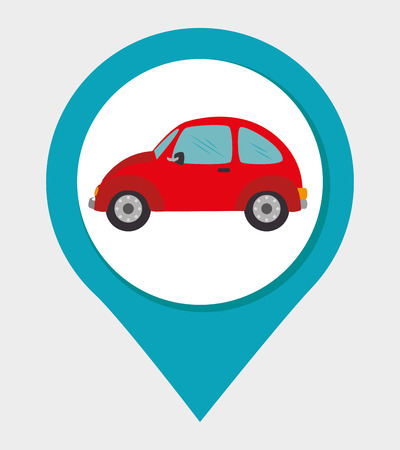1. Plan Your Route and Stops in Advance
Ensure you map out your journey, including rest stops and alternative routes, to avoid unnecessary stress and delays. A well-planned route helps you stay prepared for any unexpected roadblocks, detours, or heavy traffic.
Use GPS and Offline Maps
While modern navigation apps are reliable, having a backup plan is essential. Download offline maps in case you drive through areas with poor reception. This ensures you won’t get lost even if your phone loses signal.
Schedule Rest Breaks
Long drives can be exhausting, so its important to plan regular rest stops. Taking breaks helps prevent fatigue and keeps you alert while driving. Consider stopping every two hours to stretch, grab a snack, and refresh yourself.
Recommended Rest Stops Frequency
| Driving Duration | Recommended Break Frequency |
|---|---|
| 1-2 Hours | Optional, but a short stretch is beneficial |
| 2-4 Hours | Take a 15-minute break |
| 4+ Hours | Take a break every 2 hours for at least 15 minutes |
Identify Alternative Routes
Traffic jams, accidents, or road closures can unexpectedly delay your trip. Familiarize yourself with alternative routes before you start driving. Apps like Google Maps and Waze can suggest different paths to avoid congestion.
Check Road Conditions and Weather
Weather and road conditions can change quickly, affecting your travel time and safety. Check forecasts before you start your trip and stay updated on road conditions through local traffic websites or apps.
2. Perform a Pre-Trip Vehicle Inspection
Before hitting the road, taking a few minutes to inspect your vehicle can save you from unexpected breakdowns. A simple check of your car’s key components can help you avoid mechanical issues during your trip.
Check Tire Pressure and Tread
Properly inflated tires improve fuel efficiency and handling while reducing the risk of blowouts. Use a tire gauge to check the pressure levels and refer to your owner’s manual for the recommended PSI.
| Component | What to Check | Why It’s Important |
|---|---|---|
| Tire Pressure | Ensure tires are inflated to the recommended PSI. | Prevents blowouts and improves fuel efficiency. |
| Tire Tread | Check for uneven wear or low tread depth. | Ensures proper traction and safety. |
Inspect Fluid Levels
Low or dirty fluids can lead to engine damage or overheating. Check these key fluids and top them off if necessary:
- Engine oil
- Coolant
- Brake fluid
- Transmission fluid
- Windshield washer fluid
Test Brakes
Brakes are crucial for road safety. Press the brake pedal and listen for unusual noises or vibrations. Also, ensure the brake fluid level is sufficient to maintain stopping power.
Check Lights and Signals
Faulty headlights, brake lights, or turn signals can reduce visibility and increase accident risks. Ask a friend to help verify all exterior lights are working properly.
Inspect the Battery
A weak battery can leave you stranded. Look for corrosion on the terminals and check that the battery is securely mounted. If your battery is older than three years, consider having it tested before your trip.
Spending a few extra minutes on a pre-trip inspection helps ensure a smoother, safer road trip without mechanical surprises.

3. Pack an Emergency Kit
One of the most important things you can do before a road trip is to prepare for unexpected situations. Packing an emergency kit ensures that youre ready for minor issues and emergencies that may arise on the road.
Must-Have Items for Your Emergency Kit
Having the right supplies on hand can make all the difference in an emergency. Here are some essential items to include in your kit:
| Item | Purpose |
|---|---|
| First Aid Kit | For treating minor cuts, scrapes, or injuries |
| Flashlight | To provide light in case of nighttime emergencies or breakdowns |
| Jumper Cables | To help start your car if the battery dies |
| Non-Perishable Snacks | To keep your energy up in case of delays or breakdowns |
| Water | For hydration and basic needs |
| Basic Tools | For minor car repairs or adjustments |
Why an Emergency Kit is Essential
Road trips can be unpredictable, and even with a well-maintained vehicle, unexpected situations can occur. Whether its a dead battery, a flat tire, or needing a quick fix, having an emergency kit can help you stay safe and prepared. Keeping these essentials in your car ensures that minor issues don’t turn into big problems on the road.
4. Four, Follow Safe Driving Practices
Staying safe on the road requires following basic yet essential driving practices. No matter how experienced you are, sticking to the rules can prevent accidents and keep everyone in your vehicle safe.
Stick to Speed Limits
Speed limits are set for a reason—they help keep roads safe for everyone. Driving too fast reduces your reaction time and increases the risk of accidents. On the other hand, driving too slowly can also be hazardous, especially on highways where maintaining traffic flow is crucial.
Stay Alert
Fatigue and inattentiveness are major causes of road accidents. Always take breaks when needed, especially on long trips. If you feel drowsy, switch drivers or find a safe place to rest.
Avoid Distractions
Distracted driving is one of the biggest safety risks on the road. Common distractions include:
| Distraction | How to Avoid It |
|---|---|
| Using a cellphone | Use hands-free devices or pull over to make calls |
| Eating and drinking | Take a break to eat instead of multitasking |
| Adjusting the GPS | Set your route before starting the trip |
| Talking to passengers | Stay focused on the road, especially in heavy traffic |
Always Wear Your Seatbelt
Wearing a seatbelt is one of the simplest ways to prevent serious injury in an accident. Ensure that everyone in the car has their seatbelt fastened before hitting the road. Many states have strict seatbelt laws, and not wearing one can result in fines.
5. Five. Stay Aware of Weather and Road Conditions
Before hitting the road, always check the weather forecast and road conditions. Unexpected weather changes can create hazardous driving situations, and being prepared can help you stay safe. Rain, snow, fog, or even heavy traffic can all impact your travel time and safety.
Why Checking Weather and Road Conditions Matters
Weather and road conditions can change rapidly, especially in unfamiliar areas. Understanding what to expect allows you to plan better, avoid delays, and reduce the chances of an accident.
How to Check Weather and Road Conditions
Use reliable sources for the latest updates before and during your trip:
- Weather Apps: Use apps like The Weather Channel or AccuWeather for up-to-date forecasts.
- Traffic Apps: Google Maps, Waze, and Apple Maps provide real-time traffic updates and detours.
- State DOT Websites: Many states provide live road condition updates on their Department of Transportation websites.
- Radio and News Reports: Local radio stations often give traffic and weather reports, especially in larger cities.
Weather Conditions and How to Prepare
| Condition | How to Prepare |
|---|---|
| Rain | Check windshield wipers, drive at a safe speed, and maintain a greater following distance. |
| Snow/Ice | Carry snow chains, keep an emergency kit, and drive slower to avoid skidding. |
| Fog | Use low-beam headlights and fog lights, and avoid using high beams. |
| Extreme Heat | Check tire pressure regularly and ensure your coolant levels are adequate. |
Additional Tips
- Plan alternate routes: If major highways or roads are expected to have hazardous conditions, consider an alternative path.
- Keep an emergency kit: Pack essentials like blankets, food, water, a flashlight, and a first-aid kit in case of delays.
- Adjust travel times: If extreme weather is expected, leave earlier or delay your trip.
Final Thought
Being aware of weather and road conditions before and during your trip is crucial for a safe journey. Taking a few extra minutes to prepare can help you avoid hazards and keep you and your passengers safe on the road.


